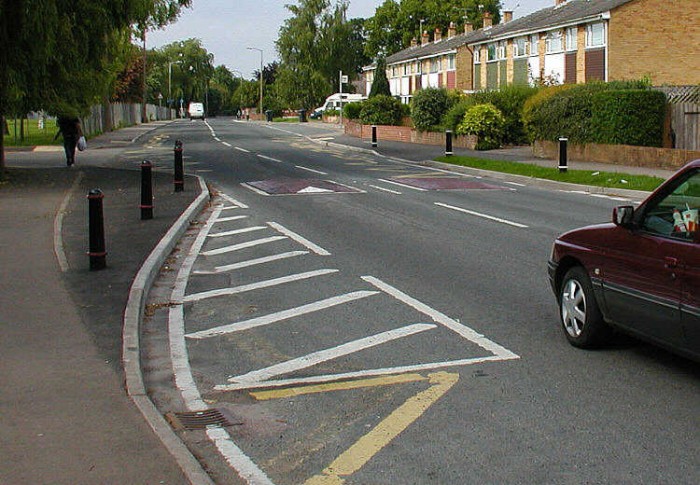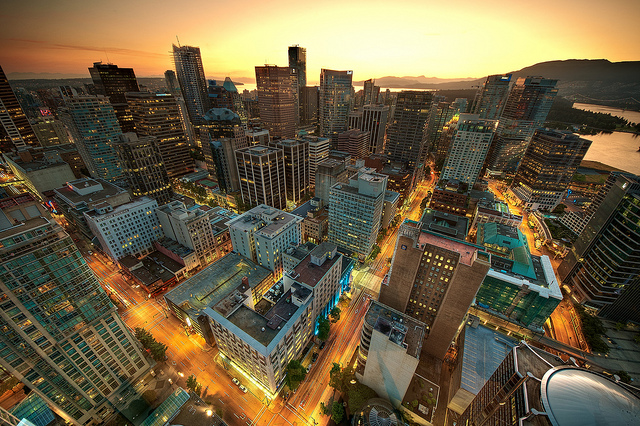Since World War II, North American cities have been built for cars, but many innovations are happening to redesign cities for safer walking and biking.
One smart redesign solution is the Vancouver model, which in 2012 devised a transportation plan which reflected a hierarchy of modes—with walking at the top of the list, followed by cycling, transit, taxi/commercial transit/shared vehicles like Car-Share, and only lastly private automobiles.
This is a refreshing move away from car culture that is both kind to the planet and healthier for its human inhabitants. The Vancouver model guides everyone toward green decisions versus working under a plan with underlying assumptions that prioritize the convenience of vehicle traffic.
According to the World Health Organization, people have a 90 percent chance of survival when struck by a car traveling at 30kph, but at 45kph the chance of survival goes down to 50 percent. Outside the urban core where cars go faster, pedestrians and cyclists have almost no chance of surviving an impact with a car going 80kph. And 88 percent of pedestrian and cyclist collisions in 2014 were for driving violations.
The Swedes have also pioneered what they call Vision Zero—a zero tolerance toward street injuries based largely on reducing vehicle speed, since speed is a key factor in reducing pedestrian and cycling deaths. NYC has been trying this out for a year and a half and has announced a record low number of pedestrian deaths after implementing the program, by simply reducing vehicle speed in the city to 40kph.

“World Speed Limits” by Amateria1121-—Own work. Licensed under CC BY-SA 4.0 via Wikimedia Commons.
A combination of small but helpful innovations is being tried out in various cities of North America. One is painting zebra stripes across heavily used downtown crosswalks, marking city centers as pedestrian focused places. Although every intersection is a legal pedestrian crosswalk, many drivers do not honor this. Limiting red light right turns could further prevent many, many collisions in these intersections.
Speed bumps help cars slow down as does reducing the width of streets. Speed bumps are not popular with car owners, but if they actually slow, no damage is done to their cars. Reducing the width of streets to accommodate bike lanes both slows vehicle traffic and encourages sharing the road.
It has been proven that the wider the road, the faster the cars.
Curb extensions of the sidewalk at intersections are another favorable safety improvement. Pedestrians become more visible to drivers, and pedestrians can see beyond parked cars and snow banks without slipping into traffic to do so. Curb extensions also tend to slow traffic at intersections, while shortening the distance pedestrians have to cross. And they provide a safe refuge similar to pedestrian islands in the middle of wide, multilane streets. Creating extra turns in a road or suburban streets also calms traffic by forcing drivers to slow on the curves.

If we are going to move away from car culture to be kind to the planet and more safe and healthy ourselves, we need to redesign our cities for pedestrians and bicycles, which burn no fossil fuels.
And this will greatly reduce the number of needless collisions, injuries, and traffic deaths.
Relephant:
The Embarrassingly Simple Solution to Climate Change.
Urban Composting. How to convince your building that it’s cool.
Author: Linda Lewis
Editor: Renée Picard
Images: Magnus Larsson at Flickr; Map via Amateria1121 / Wiki Commons; Wiki Commons







Read 4 comments and reply